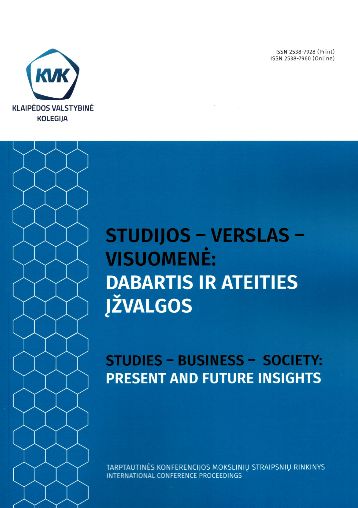SOCIAL INTEGRATION OF CHILDREN WITH AUTISM SPECTRUM DISORDER IN A PRE-SCHOOL EDUCATION INSTITUTION: FROM THE PERSPECTIVE OF TEACHERS
DOI:
https://doi.org/10.52320/svv.v1iVII.236Keywords:
autism spectrum disorder, social integration, social skillsAbstract
Autism is one of the most severe developmental disorders, manifested by impaired social interaction, language disorders, communication problems, time perception problems and unusual behaviour. Autism spectrum disorder is found all over the world and is found in children from different families. It should be noted that autism occurs regardless of the social status of the family, race or education of the parents. Based on various scientific studies, it has been established that autism occurs four times more often in males than in females. Autism is characterized by mental retardation, various diseases that complicate the social integration of children in society. When describing autism, researchers and clinicians present and emphasize different symptoms. However, one of the most used definitions is this, Autistic disorder is a group of disorders that are classified as various disorders of human development. These developmental disorders are characterized as disorders of communication skills, behaviour and socialization that occur in early childhood up to 3 years of age. Researchers suggest that autism manifests as early as the first 2 years of a child's life (Schieve, Blumberg, Rice, & Visser, 2013). Autism is a long-term developmental disorder that accompanies these children throughout their lives (Hallmayer et al., 2012; Haisley, 2014).
According to the WHO (World Health Organization), in 2016, autism spectrum disorder (hereinafter ASD) was diagnosed in 1 child out of 68. The presented research data suggests that the prevalence of ASD in North America, Asia, and Europe is between 1 and 2 percent. In the USA, 1 out of 6 children were diagnosed with various developmental disorders, including ASS (Dirzytė, Mikulėnaitė, Kalvaitis, 2016). Based on the presented research data, it can be observed that more and more children are diagnosed with ASD, therefore the social integration of these children in general preschool institutions is becoming more and more relevant, as there are not enough specialized preschool institutions for children with ASD. It is very important to integrate children with ASD into preschool institutions of general education because the main problem of such children is social exclusion. To facilitate the life of children with ASD and to minimize social exclusion in society, it is necessary to create and ensure a full social life for these children, to become independent, to develop social skills, and to reduce negative experiences that hinder successful integration.
The problem of the research. Research has shown that frequent interactions with peers in certain children can lead to positive changes in their emotional awareness and self-image. In addition, ASD has been shown to be associated with children of typical development, giving them social respect, improving friendships and play skills, in contrast to students attending special schools (Tsamoura, 2020). Also, for children with ASD, social integration, time spent with peers, improving their social skills is very important. These factors of social integration help them to fully live their lives in the future, promoting independence. When searching for scientific information about the education of such children, there is a lack of research that would reveal the best methods for integrating children with ASD into preschool institutions. It can be said that there is still a lack of knowledge for both educators and parents on how to properly integrate children with ASD, creating favourable conditions for their education and development.
The object of the research. Social integration of children with autism spectrum disorder.
The aim of the research. To analyse the social integration of children with autism spectrum disorder in a preschool education institution.
The objectives of the research:
- To analyse the possibilities of social integration of children with autism spectrum disorder in preschool education institution.
- To determine the methods of social integration of children with autism spectrum disorder in preschool education institution.
The methods of the research: scientific literature analysis, document analysis, written survey (questionnaire), quantitative data analysis.
After conducting a quantitative study, it was found that preschool institutions usually use short verbal instructions and pictures to connect with children with ASD. Visual aids are the most used educational tool in preschools for educating children with ASD. Research data show that verbal and social systems of encouraging and motivating children are mostly used to achieve better educational and socialization results. It turned out that preschool institutions mostly use the game method to promote social integration. Little attention is paid to social integration methods of ABA, PECS and TEACHH in preschool institutions.
Downloads
Published
How to Cite
Issue
Section
License
Copyright (c) 2022 Ilvija Pikturnaitė; Veneta Bugytė, Aurelija Valaitienė

This work is licensed under a Creative Commons Attribution 4.0 International License.
Individual articles are published Open Access under the Creative Commons Licence CC-BY 4.0, which permits unrestricted use, distribution, and reproduction in any medium, provided the original author and source are credited. Authors retain copyright in their articles, but grant Klaipėdos valstybinė kolegija the right of the first publication.

